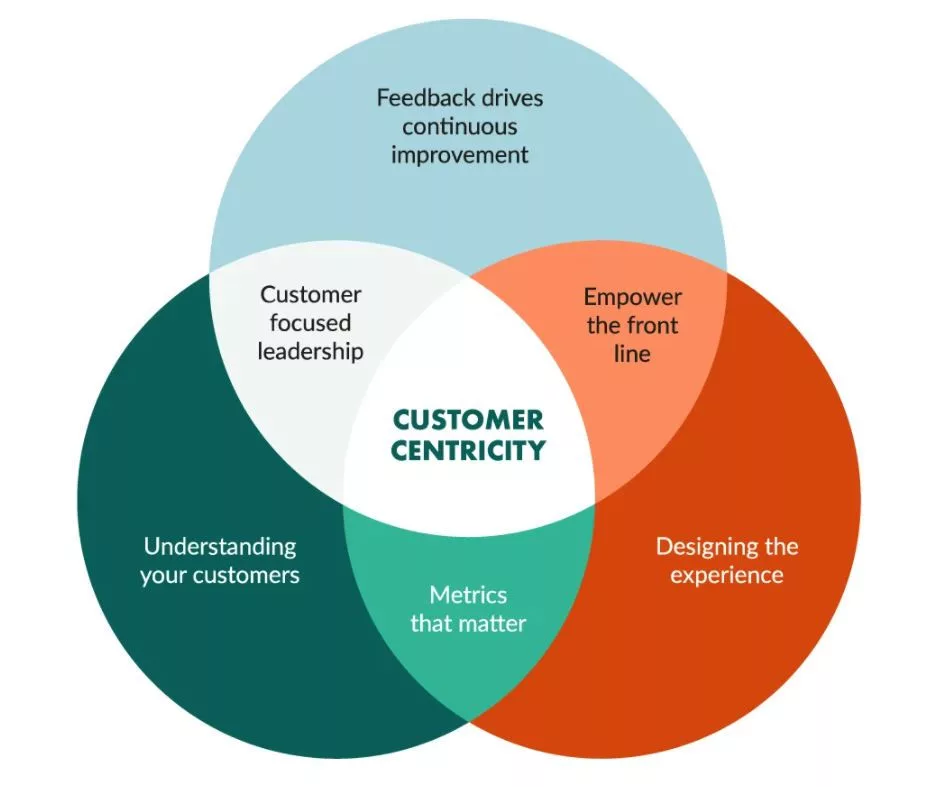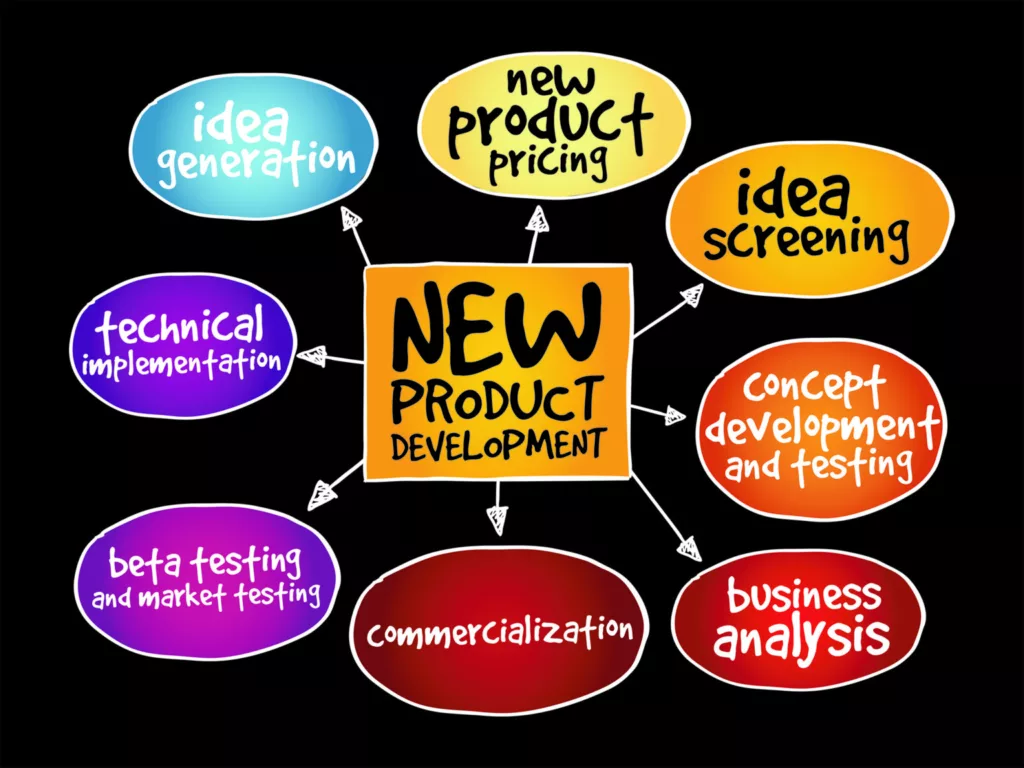Top 10 Proven Strategies for Scaling Your Business and Maximizing Profits
Md. Joynal Abdin*
Business Consultant & Digital Marketer
Co-Founder & CEO of Bangladesh Trade Center
In today’s rapidly evolving business landscape, where competition is fierce and consumer expectations continue to rise, the pursuit of growth and profitability has become more challenging than ever. For entrepreneurs and business leaders, the aspiration to scale their ventures and optimize profits is a constant driving force. However, achieving sustainable and substantial growth demands more than just ambition; it requires a strategic approach backed by proven methodologies.
In this dynamic blog post, we will delve into a comprehensive exploration of “10 Proven Strategies for Scaling Your Business and Maximizing Profits.” Whether you’re a startup founder aiming to gain a foothold in your market or a well-established company seeking to push your boundaries, these strategies have stood the test of time and market dynamics.
Scaling a business goes beyond mere expansion; it’s about orchestrating a harmonious blend of resources, processes, and innovation to ensure that growth is not only attainable but sustainable. It necessitates a holistic perspective that encompasses every facet of your business, from product development to customer experience, and from operational efficiency to financial prudence.
The strategies we’re about to delve into are not quick fixes or magic bullets; rather, they are carefully crafted methodologies that successful companies have adopted over the years to propel themselves forward. Each strategy contributes to a multifaceted approach that combines innovation, adaptability, and sound business acumen. Top 10 Proven Strategies for Scaling Your Business and Maximizing Profits could be described as follows:
- Customer-Centric Approach: Putting your customers at the core of your business is pivotal. Delivering exceptional value and building strong relationships foster loyalty and advocacy, driving organic growth.
- Innovative Product Development: Continuously innovate and refine your products or services to meet evolving customer needs and stay ahead of the competition.
- Effective Marketing and Branding: Create a compelling brand identity and employ targeted marketing strategies to increase visibility, engage your audience, and expand your reach.
- Operational Efficiency: Streamline your internal processes, optimize resource allocation, and embrace technology to enhance productivity and reduce costs.
- Strategic Partnerships: Collaborate with complementary businesses or industry leaders to tap into new markets, resources, and expertise.
- Scalable Infrastructure: Build a robust technological and organizational framework that can accommodate growth without sacrificing quality.
- Data-Driven Insights: Leverage data analytics to gain valuable insights into customer behavior, market trends, and business performance, allowing you to make informed decisions.
- Talent Acquisition and Development: Attract and retain top talent, fostering a culture of innovation, collaboration, and continuous learning.
- Diversification of Revenue Streams: Explore new avenues for revenue by diversifying your product or service offerings, ensuring a more stable income model.
- Financial Prudence: Monitor and manage your financial health meticulously, reinvesting wisely and maintaining a healthy balance between growth and profitability.
Throughout this exploration of each strategy, we’ll provide real-world examples, actionable tips, and insights to guide you in implementing these principles effectively. Remember, scaling a business is not a linear journey; it requires adaptability, perseverance, and a commitment to excellence.

- Customer-Centric Approach: Putting Customers at the Heart of Your Business
In an age where consumer preferences drive markets and competition is fierce, adopting a customer-centric approach has evolved from a buzzword to a strategic necessity. At its core, a customer-centric approach revolves around understanding, prioritizing, and meeting the needs and desires of your customers in every aspect of your business. It’s about creating a symbiotic relationship that benefits both parties – your customers receive exceptional value, and your business thrives through customer loyalty and advocacy.
1.1 Understanding the Customer Journey: To truly embrace a customer-centric mindset, you must first gain a deep understanding of your customers’ journey. This journey encompasses every touchpoint they have with your brand, from the initial awareness stage to the post-purchase experience. By mapping out this journey, you can identify pain points, opportunities for improvement, and moments of delight that can make a significant impact on customer satisfaction.
1.2 Personalization and Customization: One of the cornerstones of a customer-centric approach is personalization. Customers today expect tailored experiences that cater to their unique preferences and needs. Leveraging data analytics and technology, you can gather insights about your customers’ behaviors and preferences. This information can be used to deliver personalized recommendations, product offerings, and marketing messages, making customers feel understood and valued.
1.3 Exceptional Customer Service: Exceptional customer service is not just a reactive measure; it’s a proactive strategy that builds trust and loyalty. A customer-centric organization goes above and beyond to address customer inquiries, resolve issues promptly, and create positive interactions at every touchpoint. This commitment to service excellence can lead to not only repeat business but also positive word-of-mouth recommendations that amplify your brand’s reputation.
1.4 Feedback Loop and Continuous Improvement: Engaging your customers in a feedback loop is integral to a customer-centric approach. Actively seek feedback through surveys, reviews, and direct communication, and then listen attentively to the insights provided. This feedback can highlight areas for improvement, reveal pain points you may have missed, and uncover new opportunities to enhance the customer experience.
1.5 Anticipating and Adapting to Needs: An effective customer-centric approach extends beyond merely meeting existing needs; it involves anticipating and addressing needs before they arise. By staying attuned to market trends, staying ahead of industry shifts, and actively seeking out customer insights, you can proactively innovate and develop solutions that resonate with your customers.
1.6 Building Emotional Connections: Customers don’t just buy products or services; they buy into stories, emotions, and values. Building emotional connections with your customers fosters brand loyalty that goes beyond transactional relationships. Share your brand’s story, mission, and values in a way that resonates with your target audience, creating a sense of belonging and shared identity.
1.7 Loyalty Programs and Rewards: A customer-centric approach recognizes the value of customer loyalty and seeks to reward it. Loyalty programs, exclusive offers, and rewards can incentivize repeat business and turn customers into brand advocates. These initiatives not only enhance the customer experience but also encourage ongoing engagement and referrals.
1.8 Consistency Across Channels: In an increasingly omnichannel world, consistency across all customer touchpoints is paramount. Whether a customer interacts with your brand in-store, on your website, through social media, or via customer support, the experience should be seamless and aligned. A disjointed experience can lead to confusion and frustration, undermining your customer-centric efforts.
1.9 Measuring Customer-Centric Success: While adopting a customer-centric approach is essential, measuring its success is equally crucial. Key performance indicators (KPIs) such as customer satisfaction scores, Net Promoter Score (NPS), customer retention rates, and customer lifetime value can provide quantifiable insights into the effectiveness of your customer-centric strategies. Regularly analyzing these metrics allows you to gauge the impact of your efforts and make data-driven adjustments as needed.
1.10 Cultivating a Customer-Centric Culture: Instilling a customer-centric culture within your organization is a foundational step. This culture starts at the top, with leaders embodying and promoting customer-centric values. It permeates through every department and role, from marketing and sales to product development and customer support. Training and empowering your employees to put the customer first can lead to consistent, customer-focused interactions at every level.
In short, a customer-centric approach isn’t just a strategy; it’s a philosophy that can transform your business from transactional to transformational. By understanding your customers deeply, personalizing their experiences, delivering exceptional service, and continually evolving based on their needs, you create a virtuous cycle of customer loyalty and advocacy. Remember, in today’s competitive landscape, businesses that prioritize their customers’ well-being and satisfaction ultimately drive their own success.

- Innovative Product Development: Navigating the Path to Success
In a world driven by rapid technological advancements and evolving consumer preferences, staying ahead of the curve through innovative product development has become a hallmark of successful businesses. The ability to create new and improved products that capture the imagination of customers can fuel growth, foster brand loyalty, and keep your company competitive in a dynamic market.
2.1 Understanding Innovative Product Development: Innovative product development goes beyond incremental improvements; it involves generating novel ideas, disrupting existing norms, and introducing solutions that solve real problems or fulfill unmet needs. This approach requires a deep understanding of your target audience, market trends, and emerging technologies.
2.2 Market Research and Consumer Insights: The foundation of innovative product development is a comprehensive understanding of your target market. Conduct thorough market research to identify gaps, trends, and emerging opportunities. Dive into consumer insights to understand their pain points, preferences, and aspirations. This knowledge forms the bedrock upon which your innovative ideas can flourish.
2.3 Ideation and Brainstorming: Effective ideation involves creating an environment where creativity thrives. Encourage brainstorming sessions that bring together diverse perspectives from various departments within your organization. Cross-functional collaboration can spark fresh ideas and unconventional solutions that may not have emerged otherwise.
2.4 Design Thinking and User-Centered Approach: Adopting a design thinking approach places the end-user at the center of your product development journey. Walk in your customers’ shoes to uncover insights and empathize with their experiences. This approach can lead to products that resonate deeply with users and address their specific pain points in meaningful ways.
2.5 Prototyping and Testing: Once you’ve generated potential ideas, it’s time to transform them into tangible prototypes. Prototyping allows you to visualize concepts and gather valuable feedback early in the development process. This iterative approach enables you to make adjustments based on user reactions, refining your product to better align with market demands.
2.6 Embracing Emerging Technologies: Innovation often stems from embracing cutting-edge technologies. Whether it’s artificial intelligence, augmented reality, block chain, or Internet of Things (IoT), integrating these technologies into your products can enhance functionality, create new experiences, and differentiate your offerings in the market.
2.7 Agile Development and Iteration: Agile methodologies emphasize flexibility and iterative development. Break down your product development into manageable phases, allowing for continuous refinement based on feedback and changing requirements. This approach minimizes the risk of investing resources into products that miss the mark and allows you to pivot as needed.
2.8 Risk Assessment and Mitigation: Innovation inherently involves risk, but careful risk assessment and mitigation strategies can help manage uncertainties. Anticipate potential challenges, market shifts, and technological limitations. Have contingency plans in place to address unexpected hurdles that may arise during development.
2.9 Cross-Functional Collaboration: Innovative product development is a collaborative effort that extends beyond the boundaries of any single department. Foster cross-functional collaboration between teams such as design, engineering, marketing, and sales. Different perspectives contribute to well-rounded products that align with both technical feasibility and market demand.
2.10 Feedback-Driven Refinement: Customer feedback isn’t limited to the prototyping phase; it’s a continuous process that extends throughout the product’s lifecycle. After launch, actively seek and listen to user feedback. Monitor usage patterns, analyze customer support inquiries, and keep an open channel for suggestions. This feedback-driven refinement can lead to post-launch enhancements that keep your product relevant.
2.11 Market Timing and Adaptation: Timing is crucial in the world of innovation. While being early to market can give you a competitive advantage, being too early can result in a lack of customer readiness. Monitor market trends and assess when the right window of opportunity opens. Additionally, be prepared to adapt and evolve your product as the market landscape changes.
2.12 Balancing Creativity and Practicality: Innovative product development requires a delicate balance between creative ambition and practical execution. While aiming for groundbreaking ideas, ensure that they align with your company’s capabilities, resources, and overarching goals. Striking this balance can lead to innovative products that are both visionary and achievable.
2.13 Measuring Success and Learning from Failure: As you bring your innovative products to market, establish clear success metrics. These may include factors like user adoption rates, customer satisfaction scores, revenue growth, and more. However, innovation inherently involves some degree of risk, and failures are potential stepping stones to success. Analyze what worked and what didn’t, learn from failures, and apply these lessons to future endeavors.
2.14 Sustainability and Longevity: True innovation isn’t just about creating products that capture attention momentarily; it’s about building solutions with lasting impact. Consider the long-term sustainability and relevance of your products. Will they stand the test of time, or are they susceptible to becoming obsolete quickly?
2.15 Cultivating an Innovative Culture: A culture of innovation begins with leadership that encourages experimentation, risk-taking, and a willingness to challenge the status quo. Nurture an environment where employees feel empowered to share their ideas and collaborate across departments. Recognize and reward innovative efforts to reinforce this cultural shift.
Finally, Innovative product development is a continuous journey that requires a blend of creativity, strategic thinking, and adaptability. By leveraging consumer insights, embracing emerging technologies, fostering collaboration, and maintaining a user-centric approach, you can create products that not only meet customer needs but also set new standards in your industry. Remember that innovation is not a destination but an ongoing pursuit that keeps your business agile, relevant, and ahead of the curve.

- Effective Marketing and Branding: Crafting a Lasting Impression
In today’s hyper-connected world, effective marketing and branding have become more critical than ever for businesses seeking to stand out in a crowded marketplace. The ability to strategically position your brand and communicate your value proposition can drive customer engagement, loyalty, and ultimately, business success. This comprehensive exploration will delve into the intricacies of effective marketing and branding, guiding you through the steps to create a lasting impression.
3.1 Understanding the Power of Branding: Branding goes beyond a logo and a catchy tagline; it’s the personality, values, and essence of your business. A strong brand communicates who you are, what you stand for, and why customers should choose you over competitors. Effective branding resonates with emotions, creating a connection that goes beyond mere transactions.
3.2 Defining Your Brand Identity: Start by defining your brand identity. What does your brand represent? What are its core values, mission, and vision? Develop a clear brand identity that aligns with your target audience’s aspirations and preferences. This identity will serve as the foundation for all your marketing efforts.
3.3 Target Audience and Market Segmentation: Identifying your target audience is essential for tailored marketing. Conduct market research to understand your audience’s demographics, psychographics, behaviors, and pain points. Segment your audience into meaningful groups, allowing you to craft personalized messages that speak directly to their needs.
3.4 Creating a Consistent Visual Identity: Visual elements, such as logos, colors, fonts, and imagery, play a crucial role in conveying your brand’s personality. Create a consistent visual identity that reflects your brand’s values and resonates with your audience. Consistency across all touchpoints, from your website to social media, fosters recognition and reinforces your brand image.
3.5 Crafting Compelling Brand Messaging: Effective brand messaging communicates your value proposition succinctly and persuasively. Develop key messages that encapsulate what sets your brand apart. These messages should be memorable, clear, and aligned with your target audience’s desires and pain points.
3.6 Content Marketing and Storytelling: Content marketing has become a cornerstone of effective marketing strategies. Through storytelling, you can humanize your brand and connect with customers on a deeper level. Share narratives that highlight your brand’s journey, values, and impact. Engaging, valuable content positions your brand as a thought leader and builds trust over time.
3.7 Digital Presence and Online Platforms: In today’s digital age, your online presence is often the first interaction customers have with your brand. Invest in a user-friendly, responsive website that reflects your brand’s aesthetics and provides a seamless user experience. Leverage social media platforms to engage with your audience, share content, and foster meaningful conversations.
3.8 Search Engine Optimization (SEO): An effective online presence extends to being discoverable. Implementing SEO techniques helps your website rank higher on search engine results pages. Keyword optimization, high-quality content, and backlink building can significantly improve your online visibility and attract organic traffic.
3.9 Integrated Marketing Campaigns: Integrated marketing campaigns involve harmonizing various channels, such as social media, email marketing, content creation, and traditional advertising, to deliver a consistent message across platforms. This approach maximizes your reach and impact by ensuring that customers encounter your brand message multiple times through different mediums.
3.10 Influencer and Community Engagement: Collaborating with influencers and engaging with your community can amplify your brand’s reach. Partner with influencers whose values align with your brand and who have a genuine connection with your target audience. Encourage user-generated content and create spaces for customers to interact and share their experiences.
3.11 Data-Driven Decision-Making: Data analytics provide invaluable insights into the effectiveness of your marketing efforts. Monitor metrics such as website traffic, conversion rates, social media engagement, and email open rates. Analyze this data to refine your strategies, optimize campaigns, and allocate resources effectively.
3.12 Building Brand Loyalty: Effective marketing goes beyond acquisition; it’s about fostering loyalty. Provide exceptional customer experiences that exceed expectations. Personalize interactions, offer loyalty programs, and actively listen to customer feedback. Satisfied customers are more likely to become brand advocates, promoting your products and services to their networks.
3.13 Measuring Return on Investment (ROI): Every marketing initiative should be measurable in terms of its impact on your business. Calculate the ROI of your marketing efforts by comparing the costs of campaigns to the revenue generated. This assessment helps you allocate resources wisely and refine strategies based on what’s driving the best results.
3.14 Adaptation and Evolution: The marketing landscape is ever-changing, influenced by technology, trends, and consumer behaviors. Embrace a mindset of adaptation and evolution. Stay informed about industry shifts, consumer preferences, and emerging technologies. Be willing to pivot your strategies to stay relevant and effective.
In summary, Effective marketing and branding are intricate endeavors that require a combination of creativity, strategy, and adaptability. By understanding your audience, crafting a compelling brand identity, leveraging digital platforms, and fostering customer loyalty, you can position your business for sustained success in a competitive marketplace. Remember, the most impactful marketing doesn’t just sell products; it tells a story that resonates with hearts and minds, creating a lasting connection between your brand and your customers.

- Operational Efficiency: Streamlining Your Business for Success
Operational efficiency is the cornerstone of a successful and sustainable business. It involves optimizing processes, utilizing resources effectively, and minimizing waste to achieve higher productivity, reduced costs, and improved customer satisfaction. In an increasingly competitive landscape, businesses that prioritize operational efficiency can gain a significant competitive advantage. This exploration delves into the intricacies of operational efficiency and how it can drive success.
4.1 Understanding Operational Efficiency: Operational efficiency focuses on maximizing output while minimizing input, without sacrificing quality. It’s about doing more with less, streamlining workflows, and eliminating bottlenecks. Whether you’re a startup or an established corporation, operational efficiency is essential for maintaining agility and adaptability in an ever-changing business environment.
4.2 Process Analysis and Improvement: Start by analyzing your existing processes. Identify inefficiencies, redundant steps, and areas prone to errors. Use methodologies such as Six Sigma or Lean to streamline workflows, standardize processes, and remove unnecessary complexities. Continuous process improvement ensures that your operations evolve with changing demands.
4.3 Resource Allocation and Optimization: Effective resource allocation is key to operational efficiency. Evaluate your human resources, equipment, and technology. Are they being used to their full potential? Are there opportunities to reallocate resources for better results? By optimizing resource usage, you can enhance productivity and reduce waste.
4.4 Automation and Technology Integration: Technology plays a pivotal role in operational efficiency. Automation can handle repetitive tasks, reducing human error and freeing up your workforce for more value-added activities. Integrate technology solutions that improve collaboration, data management, and communication across departments.
4.5 Supply Chain Management: Efficient supply chain management ensures timely procurement, production, and distribution of goods or services. Work closely with suppliers to optimize inventory levels and reduce lead times. Implement tools like Enterprise Resource Planning (ERP) systems to streamline supply chain processes and enhance visibility.
4.6 Inventory Management: Excess inventory ties up capital and can lead to waste. Implement inventory management practices that align with demand forecasts. Utilize Just-in-Time (JIT) or Kanban systems to maintain lean inventory levels while ensuring you have what’s needed to meet customer demands.
4.7 Quality Control and Assurance: Operational efficiency isn’t just about speed; it’s about delivering quality. Implement robust quality control measures to detect and prevent defects early in the process. This reduces rework, minimizes customer complaints, and boosts overall customer satisfaction.
4.8 Employee Training and Empowerment: Your employees are central to operational efficiency. Provide comprehensive training to ensure they understand processes, tools, and best practices. Empower them to contribute ideas for improvement and involve them in decision-making. Engaged and knowledgeable employees are more likely to identify opportunities for optimization.
4.9 Streamlined Communication: Effective communication is vital for seamless operations. Implement clear communication channels and protocols that minimize misunderstandings and delays. Foster collaboration among teams to ensure everyone is aligned and working towards common goals.
4.10 Performance Metrics and Key Performance Indicators (KPIs): Set clear performance metrics and KPIs to measure operational efficiency. Monitor metrics such as production cycle times, lead times, resource utilization, and error rates. Regularly review these metrics to identify trends, areas for improvement, and success stories.
4.11 Data-Driven Decision Making; Leverage data analytics to make informed decisions. Data can uncover patterns, highlight areas of concern, and reveal opportunities for optimization. Analyze historical data to identify trends, forecast demand, and make strategic decisions that support operational efficiency.
4.12 Sustainability and Environmental Impact: Operational efficiency isn’t limited to business outcomes; it also has environmental implications. Implement sustainable practices that reduce waste, energy consumption, and carbon footprint. Going green not only benefits the environment but also resonates positively with environmentally-conscious customers.
4.13 Continuous Learning and Adaptation: Operational efficiency is an ongoing journey, not a destination. Stay informed about industry trends, new technologies, and evolving customer preferences. Encourage a culture of continuous learning and adaptation, where your organization is prepared to pivot as needed.
In conclusion, Operational efficiency is a multifaceted endeavor that touches every aspect of your business. By optimizing processes, utilizing resources effectively, embracing technology, and fostering a culture of continuous improvement, you can enhance productivity, reduce costs, and elevate customer satisfaction. Operational efficiency isn’t just a strategy; it’s a mindset that empowers your business to navigate challenges, seize opportunities, and thrive in an ever-evolving business landscape.

- Strategic Partnerships: Collaborative Pathways to Growth and Innovation
In the modern business landscape, the power of strategic partnerships has taken center stage as a catalyst for growth, innovation, and mutual success. By forming alliances with complementary organizations, businesses can leverage each other’s strengths, resources, and expertise to achieve shared objectives. This exploration dives into the intricacies of strategic partnerships, outlining how they work, their benefits, and the keys to cultivating successful collaborations.
5.1 Understanding Strategic Partnerships: A strategic partnership is more than a transactional agreement; it’s a collaborative relationship between two or more entities, guided by a common vision and shared goals. These partnerships transcend traditional buyer-supplier relationships, focusing on long-term value creation through joint efforts and mutual benefits.
5.2 Types of Strategic Partnerships:
- Supplier Partnerships: These involve collaboration with suppliers to optimize the supply chain, reduce costs, and ensure a consistent flow of quality materials or services.
- Distribution Partnerships: Organizations team up to extend their market reach by leveraging each other’s distribution channels, customer bases, and networks.
- Joint Ventures: Entities create a new business entity to pursue a specific project or opportunity. Each partner contributes resources, expertise, and capital.
- Technology Alliances: Businesses collaborate to develop or integrate technology solutions, combining their expertise to create innovative products or services.
- Marketing and Co-branding Partnerships: Companies collaborate on marketing campaigns, co-branding initiatives, or cross-promotions to tap into each other’s customer bases.
- Research and Development Collaborations: Organizations pool resources to conduct joint research and development efforts, sharing risks and benefits in the pursuit of innovation.
5.3 Benefits of Strategic Partnerships:
- Expanded Market Reach: Partnerships allow access to new markets, customer segments, and distribution channels, accelerating growth without the need for substantial investments.
- Resource Sharing: Organizations can leverage each other’s resources, whether that’s capital, technology, expertise, or intellectual property.
- Risk Mitigation: By sharing risks and costs, partners can navigate uncertain terrain more effectively, especially in ventures that might be too risky for one entity alone.
- Enhanced Innovation: Collaborating with external partners brings fresh perspectives, ideas, and insights that can drive innovation and spark creativity.
- Synergy of Expertise: Strategic partners bring unique skills and knowledge to the table, allowing each organization to benefit from the other’s strengths.
- Operational Efficiency: Partnerships can lead to streamlined operations, reduced costs, and optimized processes as both entities work together to achieve common goals.
- Competitive Advantage: Partnering with the right organization can provide a competitive edge, helping to differentiate products or services in the market.
5.4 Cultivating Successful Strategic Partnerships:
- Clear Alignment: Ensure that the partner’s goals, values, and objectives align with your own. A shared vision forms the foundation of a successful partnership.
- Complementary Strengths: Partnerships are most effective when each entity brings something unique to the table that complements the other’s capabilities.
- Trust and Transparency: Open communication, trust, and transparency are essential. Both parties must be willing to share information, insights, and challenges.
- Defined Roles and Responsibilities: Clearly outline each partner’s roles, responsibilities, and contributions to avoid misunderstandings and conflicts.
- Mutually Beneficial Terms: Partnerships thrive when benefits are balanced. The arrangement should offer advantages to both entities, ensuring a win-win situation.
- Continuous Communication: Maintain regular communication channels to stay updated on progress, address challenges, and make adjustments as needed.
- Flexibility and Adaptability: Be prepared to adapt and pivot as circumstances change. A flexible approach allows partnerships to remain relevant and effective.
- Legal and Contractual Framework: Draft a well-defined partnership agreement that outlines terms, expectations, contributions, and exit strategies.
- Long-Term Focus: Strategic partnerships are built for the long term. Invest in nurturing the relationship and exploring new opportunities together.
5.5 Measuring Success: Measuring the success of a strategic partnership goes beyond financial metrics. Consider factors such as the achievement of shared goals, innovation outcomes, increased market reach, and improved customer satisfaction. Regularly review these indicators to assess the partnership’s impact and identify areas for improvement.
Finally we can sate; Strategic partnerships hold the potential to reshape industries, drive innovation, and elevate both organizations involved. By aligning visions, leveraging each other’s strengths, and fostering collaborative relationships, businesses can amplify their impact and navigate the complex challenges of today’s global marketplace. When pursued with careful consideration, strategic partnerships can become powerful drivers of growth, offering a pathway to achieving objectives that might have been unattainable on their own.

- Scalable Infrastructure: Building the Foundation for Growth
In a world where businesses need to adapt quickly to changing demands and opportunities, having a scalable infrastructure is crucial for achieving sustainable growth. Scalability refers to a system’s ability to handle increasing workloads efficiently without compromising performance. Whether you’re a startup or an established enterprise, a scalable infrastructure empowers you to seize new opportunities, accommodate growth, and maintain a competitive edge. This exploration delves into the intricacies of scalable infrastructure and how it drives success.
6.1 Understanding Scalable Infrastructure: Scalable infrastructure goes beyond just expanding resources; it’s about designing a framework that can seamlessly accommodate increased demands without causing disruptions or inefficiencies. This infrastructure anticipates growth and ensures that as your business expands, your systems, processes, and technologies can scale up in a cost-effective and efficient manner.
6.2 Key Elements of Scalable Infrastructure:
- Cloud Computing: Cloud services provide on-demand access to computing resources, allowing you to scale up or down as needed without the need for significant upfront investments. Cloud infrastructure offers flexibility, scalability, and the ability to pay only for what you use.
- Virtualization: Virtualization technology allows you to create virtual instances of servers, storage, and networking components. This not only optimizes resource utilization but also simplifies the process of scaling by enabling the quick provisioning of new resources.
- Distributed Systems: Distributed systems spread the workload across multiple servers or nodes. This approach improves performance, fault tolerance, and scalability. Popular technologies like Kubernetes facilitate the management of distributed applications.
- Microservices Architecture: Microservices break down applications into smaller, independent components that can be developed, deployed, and scaled separately. This architecture enhances agility and scalability by allowing you to focus resources where they’re needed most.
- Automation and DevOps Practices: Automation streamlines the process of provisioning, configuring, and managing infrastructure components. DevOps practices promote collaboration between development and operations teams, resulting in faster deployment and easier scalability.
6.3 Benefits of Scalable Infrastructure:
- Flexible Resource Allocation: A scalable infrastructure enables you to allocate resources based on current demands. This flexibility prevents overprovisioning and underutilization, leading to cost savings.
- Responsive to Growth: As your business expands, a scalable infrastructure can handle increased workloads, ensuring that your systems remain responsive and maintain optimal performance.
- Improved Reliability: Scalability often goes hand in hand with redundancy and fault tolerance. By distributing workloads and resources, you enhance your system’s resilience and minimize downtime.
- Enhanced Customer Experience: Scalability allows you to maintain a high level of service even during peak usage periods. This translates into a positive customer experience and builds customer loyalty.
- Cost-Efficiency: With scalability, you only need to invest in resources when they’re necessary. This cost-efficient approach helps manage budgets while maximizing ROI.
- Support for Innovation: Scalable infrastructure provides a solid foundation for experimenting with new technologies and innovative solutions. It allows you to test ideas without major disruptions.
6.4 Designing a Scalable Infrastructure:
- Capacity Planning: Analyze your current and projected resource needs. Understand the growth patterns of your business to anticipate when and how much scaling will be required.
- Modular Design: Divide your infrastructure into modular components that can be scaled independently. This way, you can focus resources on specific areas without affecting the entire system.
- Load Balancing: Implement load balancing mechanisms to evenly distribute traffic across servers or resources. Load balancers ensure efficient utilization and prevent bottlenecks.
- Elastic Scaling: Design your infrastructure to scale both vertically (adding resources to existing components) and horizontally (adding more instances). Elastic scaling ensures responsiveness to changes in demand.
- Monitoring and Analytics: Set up monitoring tools to track resource utilization, performance metrics, and potential bottlenecks. Analytics help you make informed decisions about when and how to scale.
- Automated Scaling: Leverage automation tools to enable automatic scaling based on predefined conditions, such as CPU usage or network traffic. Automated scaling minimizes manual intervention and ensures quick responsiveness.
6.5 Challenges and Considerations:
- Cost Management: While scalability can lead to cost savings, it’s important to manage expenses related to scaling. Over scaling can result in unnecessary expenses, while under scaling can affect performance.
- Data Management: Scalable infrastructure requires effective data management strategies. Ensuring data consistency, availability, and security across distributed systems is crucial.
- Application Design: Your application’s architecture should be aligned with your infrastructure’s scalability. Not all applications are inherently scalable, so design choices play a significant role.
- Security Considerations: As your infrastructure scales, security becomes even more critical. Implement robust security measures to safeguard your data and systems.
Finally, Scalable infrastructure is the bedrock upon which business growth and innovation are built. By designing a framework that can accommodate increasing workloads, utilizing cloud technologies, embracing automation, and fostering an agile mindset, you position your business to respond effectively to changing market dynamics. A scalable infrastructure empowers you to seize opportunities, enhance customer experiences, and drive success in an ever-evolving business landscape.

- Data-Driven Insights: Illuminating Paths to Informed Decisions
In an era marked by information abundance, the power of data-driven insights has emerged as a game-changer for businesses across industries. By harnessing the vast amounts of data generated daily, organizations can gain valuable insights into customer behavior, market trends, and operational performance. These insights provide a competitive edge by enabling informed decision-making and facilitating strategic planning. This exploration delves into the intricacies of data-driven insights, illustrating their significance and outlining the steps to unlock their potential.
7.1 Understanding Data-Driven Insights: Data-driven insights refer to actionable conclusions derived from analyzing large datasets. These insights go beyond surface-level observations, revealing patterns, correlations, and trends that might otherwise remain hidden. By transforming raw data into meaningful information, businesses can make smarter decisions, optimize processes, and capitalize on opportunities.
7.2 Importance of Data-Driven Insights:
- Informed Decision-Making: Data-driven insights empower decision-makers with accurate, up-to-date information. This informed decision-making minimizes risks and enhances the likelihood of successful outcomes.
- Precision and Accuracy: Insights derived from data analysis are often more precise and accurate than intuition or guesswork. Businesses can base strategies on objective data rather than subjective opinions.
- Competitive Advantage: Organizations that leverage data-driven insights gain a competitive edge. By anticipating trends and customer preferences, they can tailor offerings to meet market demands effectively.
- Enhanced Customer Understanding: Data-driven insights provide a deeper understanding of customer behavior, preferences, and pain points. This insight enables businesses to deliver personalized experiences and build stronger customer relationships.
- Resource Optimization: Efficient resource allocation is critical for business success. Data-driven insights help identify areas of waste or inefficiency, allowing organizations to optimize resource usage.
- Innovation and Strategy: Data insights fuel innovation by identifying gaps in the market, untapped opportunities, and emerging trends. These insights guide the development of new products or services and shape strategic planning.
7.3 Steps to Unlock Data-Driven Insights:
- Data Collection and Integration: Gather data from various sources, such as customer interactions, transactions, social media, and operational processes. Integrate data from disparate sources to create a holistic view.
- Data Cleaning and Preparation: Raw data is often messy and unstructured. Cleanse and preprocess the data to remove errors, duplicates, and inconsistencies. This step ensures that the analysis is based on accurate information.
- Data Storage and Management: Store data in a secure, organized manner. Database management systems and data warehouses are essential for efficient data retrieval and analysis.
- Data Analysis: Employ data analysis techniques such as descriptive, diagnostic, predictive, and prescriptive analytics. These approaches uncover insights, patterns, correlations, and trends.
- Visualization: Visualizations, such as charts, graphs, and dashboards, make complex data more accessible. Visualization aids in understanding insights quickly and facilitates communication.
- Machine Learning and AI: Utilize machine learning algorithms and artificial intelligence to uncover intricate insights that might not be apparent through traditional methods.
- Segmentation: Segment data into meaningful categories to gain insights about specific customer groups, market segments, or product categories.
- Hypothesis Testing: Formulate hypotheses based on data patterns and test them to validate insights or conclusions.
- Continuous Monitoring: Insights are not static; they evolve with changing data. Implement continuous monitoring to track trends and adapt strategies accordingly.
- Cross-Functional Collaboration: Collaboration between departments such as marketing, sales, and operations enhances insights’ impact. Different perspectives can lead to comprehensive insights.
7.4 Challenges and Considerations:
- Data Quality: Poor-quality data leads to inaccurate insights. Ensure data accuracy through proper cleaning, validation, and maintenance.
- Privacy and Security: Protecting sensitive data is paramount. Comply with data protection regulations and implement security measures to prevent breaches.
- Bias and Interpretation: Bias in data collection or analysis can lead to skewed insights. Be cautious and transparent about potential biases.
- Technology and Tools: Choose appropriate tools and technologies for data analysis. Invest in solutions that align with your organization’s needs and capabilities.
7.5 Embracing a Data-Driven Culture:
- Leadership Commitment: Leadership must champion a data-driven culture. Encourage decision-makers to base choices on insights rather than gut feelings.
- Data Literacy: Promote data literacy across the organization. Ensure employees understand how to interpret and use data-driven insights.
- Training and Education: Provide training and educational resources to employees on data analysis tools and techniques.
- Open Communication: Foster an environment where employees feel comfortable sharing insights and ideas based on data analysis.
In short, Data-driven insights are invaluable assets that guide businesses toward informed decisions and strategic planning. By collecting, analyzing, and interpreting data, organizations can uncover trends, identify opportunities, and mitigate risks. Data-driven insights empower businesses to respond dynamically to changing market conditions and customer preferences, ultimately driving success in an increasingly competitive landscape. As the world becomes more data-driven, harnessing insights becomes not just a competitive advantage but a necessity for sustainable growth and innovation.

- Talent Acquisition and Development: Nurturing the Backbone of Business Success
In today’s fast-paced and competitive business landscape, talent acquisition and development have become integral pillars for organizations striving to achieve sustainable growth and innovation. A skilled and motivated workforce can drive business success, enhance productivity, and foster a culture of continuous improvement. This exploration delves into the intricacies of talent acquisition and development, highlighting their significance and providing insights into effective strategies.
8.1 Understanding Talent Acquisition and Development: Talent acquisition encompasses the process of identifying, attracting, and hiring candidates who possess the skills, experience, and cultural fit necessary to excel within an organization. On the other hand, talent development focuses on nurturing employees’ skills, competencies, and potential through training, education, and growth opportunities. Together, these practices form a holistic approach to building a capable and motivated workforce.
8.2 Importance of Talent Acquisition and Development:
- Business Success: A skilled workforce contributes directly to business success by driving innovation, customer satisfaction, and operational excellence.
- Competitive Advantage: Companies with a strong talent acquisition and development strategy have a competitive edge in recruiting top talent and retaining valuable employees.
- Employee Engagement: Providing growth opportunities and investing in employees’ development enhances engagement and job satisfaction, reducing turnover rates.
- Leadership Pipeline: Talent development helps identify and groom future leaders from within the organization, ensuring a steady supply of capable managers.
- Adaptability: In an ever-changing business environment, a well-developed talent pool can adapt to new challenges, technologies, and market dynamics.
8.3 Talent Acquisition Strategies:
- Strategic Workforce Planning: Align talent acquisition with your business strategy. Identify the skills and competencies needed to achieve organizational goals.
- Employer Branding: Build a positive employer brand to attract top talent. Showcase your company’s culture, values, and opportunities for growth.
- Multichannel Recruitment: Utilize a variety of recruitment channels, including job boards, social media, referrals, and career fairs, to reach a diverse pool of candidates.
- Leverage Technology: Use applicant tracking systems (ATS) to streamline recruitment processes, manage candidate data, and improve efficiency.
- Behavioral Assessments: Implement behavioral assessments and skills tests to ensure candidates possess the required skills and fit the organization’s culture.
8.4 Talent Development Strategies:
- Training and Development Programs: Offer structured training programs that enhance employees’ skills, from technical competencies to soft skills like communication and leadership.
- Mentorship and Coaching: Pair employees with mentors or coaches who provide guidance, feedback, and support for their professional growth.
- Career Pathing: Provide clear career paths and growth opportunities within the organization. Employees are more likely to stay if they see a future with the company.
- Continuous Learning: Encourage a culture of continuous learning by offering access to online courses, workshops, and industry certifications.
- Performance Management: Implement regular performance reviews and feedback sessions to align employee development with organizational goals.
- Succession Planning: Identify high-potential employees and develop plans for their advancement into leadership roles.
8.5 Challenges and Considerations:
- Changing Skill Demands: Rapid technological advancements require organizations to continuously reassess the skills they need and provide ongoing training.
- Retention: Developing top talent is beneficial but retaining them is equally important. Create an environment where employees feel valued and motivated to stay.
- Diversity and Inclusion: Ensure that talent development efforts promote diversity and inclusion, creating opportunities for all employees to succeed.
- Resource Allocation: Balancing budget constraints with the need for training and development can be challenging. Prioritize investments wisely.
8.6 Creating a Talent-Centric Culture:
- Leadership Support: Leadership commitment to talent acquisition and development sets the tone for the entire organization.
- Employee Involvement: Involve employees in shaping their own development plans, giving them a sense of ownership and commitment.
- Recognition and Rewards: Recognize and reward employees who actively engage in development efforts, demonstrating the organization’s commitment to growth.
- Feedback and Communication: Establish open channels of communication for employees to voice their development needs and aspirations.
Summary; Talent acquisition and development form the foundation of a thriving, innovative, and resilient organization. By strategically acquiring top talent and providing opportunities for their growth, businesses can stay ahead of the competition, drive productivity, and adapt to changing market dynamics. An investment in talent is an investment in the future of the organization, fostering a culture of continuous learning, empowerment, and success. With a well-executed talent acquisition and development strategy, businesses can build a workforce that not only meets current demands but also shapes the future of the company.

- Diversification of Revenue Streams: Building Resilience and Growth
In the dynamic and uncertain world of business, relying on a single revenue source can be risky. The concept of diversification of revenue streams has emerged as a strategic imperative for organizations seeking to mitigate risks, enhance stability, and achieve sustainable growth. By expanding revenue sources beyond their core offerings, businesses can tap into new markets, cater to diverse customer needs, and adapt more effectively to changing economic conditions. This exploration delves into the intricacies of revenue stream diversification, highlighting its significance and providing insights into effective strategies.
9.1 Understanding Revenue Stream Diversification: Revenue stream diversification involves generating income from multiple sources that are distinct from one another. This strategy reduces a business’s reliance on a single product, service, or market, thereby enhancing its resilience against disruptions and market shifts. Diversification can take various forms, including new products or services, entering new markets, or leveraging different sales channels.
9.2 Importance of Revenue Stream Diversification:
- Risk Mitigation: Relying solely on one revenue source makes a business vulnerable to market fluctuations, shifts in consumer preferences, or industry-specific challenges. Diversification spreads risk and minimizes the impact of any one revenue source’s decline.
- Stability: A diverse revenue portfolio provides stability in times of economic uncertainty. When one revenue stream experiences a downturn, others can compensate and maintain overall financial health.
- Opportunity for Growth: Diversification opens doors to new growth opportunities. Expanding into new markets, industries, or customer segments can lead to increased market share and revenue.
- Adaptability: A diversified business is more adaptable to changes in the business environment. It can pivot quickly to respond to emerging trends or seize new opportunities.
9.3 Strategies for Diversification of Revenue Streams:
- Introduce New Products or Services: Expanding your product or service offerings within your current market can attract new customers and generate additional revenue. This can involve variations of existing offerings or entirely new innovations.
- Enter New Markets: Identify markets that align with your core competencies and extend your reach beyond your current geographic or demographic boundaries.
- Online Sales and E-commerce: Establish an online presence to tap into the growing e-commerce market. This can include selling products online, offering digital services, or leveraging affiliate marketing.
- Partnerships and Alliances: Collaborate with complementary businesses to create bundled offerings, cross-promotions, or joint ventures that broaden your customer base.
- Subscription Models: Implement subscription-based services that provide a steady, recurring revenue stream while offering customers ongoing value.
- Licensing and Franchising: License your brand or technology to other businesses or explore franchising opportunities to expand your reach without directly managing new locations.
- Value-Added Services: Offer additional services that complement your core offerings and enhance customer experience, thereby increasing revenue per customer.
- Data Monetization: Leverage the data you collect to offer insights, analytics, or industry reports to other businesses, generating revenue from your data assets.
- Vertical Integration: Control various stages of the supply chain, from raw materials to distribution, to capture a larger share of the value chain.
9.4 Challenges and Considerations:
- Resource Allocation: Diversification requires investment, both in terms of time and financial resources. Prioritize opportunities that align with your business’s strengths and growth strategy.
- Market Research: Thoroughly research new markets, customer segments, or product offerings to understand their potential and assess demand.
- Brand Consistency: While diversifying, ensure that your brand remains consistent across different revenue streams. Brand coherence builds trust and recognition.
- Operational Efficiency: Managing multiple revenue streams can strain resources. Optimize processes and workflows to ensure efficient operations.
- Risk Assessment: Not all diversification efforts are successful. Conduct risk assessments and scenario analyses to evaluate potential risks and rewards.
9.5 Creating a Balanced Diversification Strategy:
- Strategic Alignment: Diversification should align with your overall business strategy and long-term goals. Ensure that new revenue streams contribute to your core mission.
- Flexibility: Be open to adapting your strategy based on market feedback and changing conditions. A diversified approach requires ongoing evaluation and adjustment.
- Continuous Learning: Stay informed about industry trends, customer preferences, and emerging technologies that can guide your diversification decisions.
- Measurable Metrics: Define clear performance metrics for each revenue stream. Regularly analyze these metrics to assess the effectiveness of your diversification efforts.
Finally, Diversification of revenue streams is a proactive approach to building a resilient and thriving business. By expanding into new markets, introducing new products or services, and exploring various revenue models, organizations can reduce risk, seize growth opportunities, and maintain financial stability even in challenging times. A well-executed diversification strategy requires strategic alignment, continuous assessment, and a willingness to innovate. By nurturing a diverse portfolio of revenue streams, businesses position themselves to navigate uncertainties, capitalize on emerging trends, and achieve long-term success.

- Financial Prudence: Navigating the Path to Sound Financial Management
In the ever-evolving landscape of business and personal finances, the concept of financial prudence has emerged as a fundamental principle for achieving stability, sustainability, and growth. Financial prudence involves making thoughtful and strategic decisions to effectively manage resources, mitigate risks, and ensure long-term financial well-being. This exploration delves into the intricacies of financial prudence, highlighting its significance, key principles, and practical strategies for implementation.
10.1 Understanding Financial Prudence: Financial prudence is a mindset and a set of practices that revolve around responsible and strategic financial decision-making. It involves avoiding unnecessary risks, managing debts wisely, saving for the future, and making informed choices that align with long-term goals.
10.2 Key Principles of Financial Prudence:
- Budgeting and Planning: Creating a comprehensive budget that outlines income, expenses, and savings goals is the foundation of financial prudence. A well-structured budget helps allocate resources effectively and prevents overspending.
- Risk Management: Assessing and mitigating financial risks is crucial. This includes having insurance coverage, creating emergency funds, and diversifying investments to safeguard against unexpected events.
- Debt Management: Borrowing prudently and managing debt levels are essential. Avoid taking on excessive debt that could strain your financial position, and focus on paying down high-interest debts.
- Savings and Investments: Prioritize saving a portion of your income and investing it wisely. Investments should align with your risk tolerance and long-term goals.
- Long-Term Perspective: Think beyond short-term gains and losses. Financial prudence involves making decisions that ensure your financial well-being in the long run.
10.3 Strategies for Implementing Financial Prudence:
- Create a Realistic Budget: Develop a budget that covers all essential expenses while allowing room for savings and investments. Regularly review and adjust your budget as circumstances change.
- Emergency Fund: Build an emergency fund that can cover three to six months’ worth of living expenses. This fund provides a safety net during unexpected financial crises.
- Manage Debt Wisely: Prioritize paying off high-interest debts first, such as credit card balances. Consider consolidating debts and negotiating lower interest rates if possible.
- Diversify Investments: Spread your investments across different asset classes to reduce risk. Consult with financial advisors to create a diversified portfolio that aligns with your goals and risk tolerance.
- Save for Retirement: Contribute to retirement accounts like 401(k)s or IRAs. Start as early as possible to benefit from the power of compound interest.
- Insurance Coverage: Ensure you have adequate insurance coverage, including health, life, disability, and property insurance, to protect yourself and your assets.
- Avoid Impulse Spending: Practice delayed gratification and avoid making impulsive purchases. Consider needs versus wants before spending.
- Educate Yourself: Continuously educate yourself about personal finance topics, investment options, and economic trends. Knowledge empowers you to make informed decisions.
10.4 Benefits of Financial Prudence:
- Financial Security: Financial prudence helps build a safety net that safeguards you and your family from unforeseen circumstances, reducing financial stress.
- Debt Reduction: Responsible debt management prevents excessive debt accumulation, freeing up resources for savings and investments.
- Future Goals: Financial prudence enables you to plan for significant life events such as education, buying a home, starting a business, or retiring comfortably.
- Wealth Accumulation: Consistent savings and wise investments contribute to building wealth over time, offering financial freedom and opportunities for future generations.
- Reduced Stress: Having a clear financial plan and the discipline to follow it reduces anxiety and uncertainty about money matters.
10.5 Challenges and Considerations:
- Temptations and Lifestyle Inflation: Avoid succumbing to the temptation of lifestyle inflation, where increased income leads to higher spending. Maintain discipline to prioritize savings.
- Economic Uncertainties: The economy can experience fluctuations that impact investments and financial stability. Diversify investments to mitigate the impact of economic uncertainties.
- Emotional Decision-Making: Emotional impulses can drive financial decisions. Develop the discipline to make rational choices based on facts and long-term goals.
10.6 Cultivating a Culture of Financial Prudence:
- Education: Foster financial literacy among employees, encouraging them to make informed decisions about their personal finances.
- Benefits and Perks: Offer financial wellness programs, workshops, or resources to help employees improve their financial well-being.
- Leadership Role: Set an example of financial prudence at the leadership level, demonstrating the organization’s commitment to responsible financial management.
- Employee Assistance Programs: Provide resources for employees facing financial difficulties, helping them navigate challenges and make informed choices.
Financial prudence is a cornerstone of successful personal and business finances. By adopting a disciplined approach to budgeting, debt management, savings, and investments, individuals and organizations can achieve stability, resilience, and growth. Financial prudence empowers you to navigate economic uncertainties, achieve long-term goals, and build a solid foundation for your financial future. With thoughtful planning, informed decision-making, and a commitment to responsible financial management, you can navigate the complexities of the financial landscape with confidence and achieve lasting prosperity.

Closing remarks:
In conclusion, the journey of scaling your business and maximizing profits is a multifaceted endeavor that demands strategic thinking, adaptability, and dedication. The top 10 proven strategies presented here offer a roadmap to guide your efforts toward sustainable growth and financial success. By embracing a customer-centric approach, fostering innovation in product development, and leveraging the power of effective marketing and branding, you set the stage for expansion and increased market share.
Operational efficiency, strategic partnerships, and a diversified revenue portfolio ensure that your business remains agile and resilient in the face of challenges. Moreover, integrating data-driven insights into your decision-making process empowers you to make informed choices and stay ahead of market trends. Embracing scalability as a foundation for growth and practicing financial prudence further solidify your path to success.
Remember, scaling a business is not a one-size-fits-all journey, but rather a dynamic process that requires continuous learning and adaptation. Each strategy, when approached thoughtfully and tailored to your business’s unique context, contributes to a holistic growth trajectory. By weaving these strategies into your business fabric, you’re not only maximizing profits but also fostering a culture of innovation, customer satisfaction, and long-term success. The challenges may be significant, but so are the rewards. With determination, strategic execution, and an unwavering commitment to excellence, you have the tools to ascend to new heights and realize your business’s full potential.
Top 10 Proven Strategies for Scaling Your Business and Maximizing Profits: Top 10 Proven Strategies for Scaling Your Business and Maximizing Profits
*Author’s Short Profile:

Mr. Md. Joynal Abdin is a Business Consultant & Digital Marketer based in Dhaka, Bangladesh. He is also Co-Founder & CEO of Bangladesh Trade Center. Previously he served at Dhaka Chamber of Commerce & Industry (DCCI) as Executive Secretary; DCCI Business Institute (DBI) as Executive Director; SME Foundation as Deputy Manager; and the Federation of Bangladesh Chambers of Commerce & Industry (FBCCI) as Assistant Secretary.
The list of services Mr. Abdin is offering includes but not limited to Business Research and Documentations like Feasibility Study, Project Proposal Preparation, Writing Business Manual, Standard Operating Procedures etc.; Export Market Selection and Product Positioning at Home and Abroad; Buyers-Sellers Matchmaking; Website Development; Search Engine Optimization (SEO); and Social Media Marketing etc.
Top 10 Proven Strategies for Scaling Your Business and Maximizing Profits: Top 10 Proven Strategies for Scaling Your Business and Maximizing Profits

